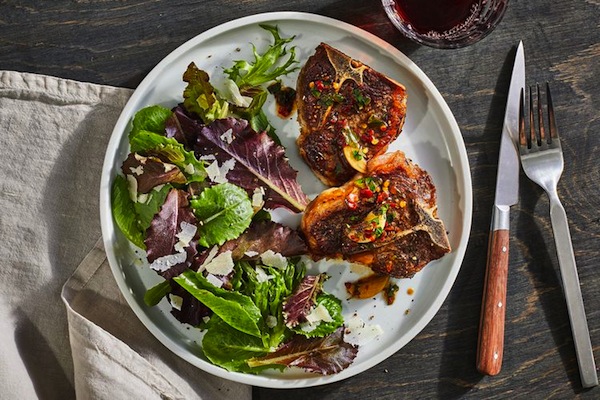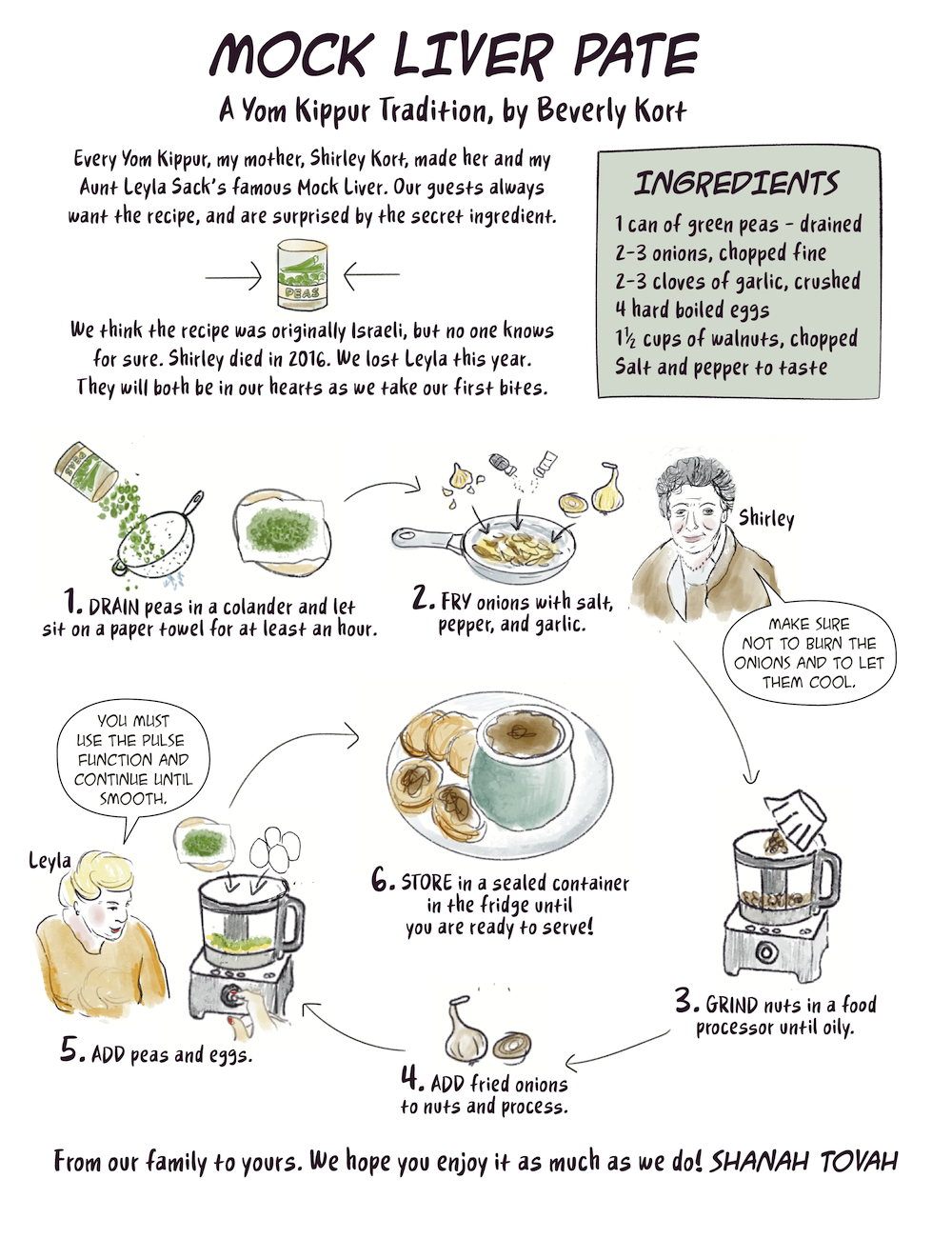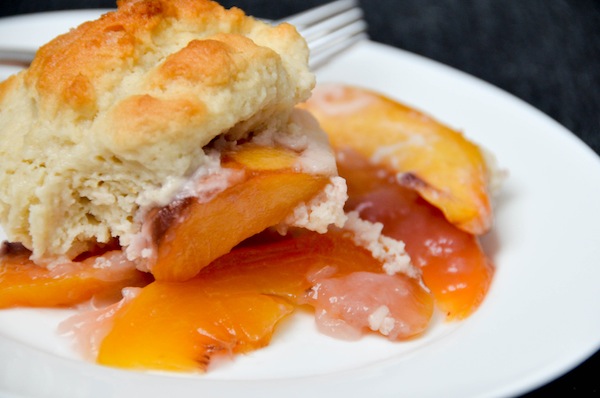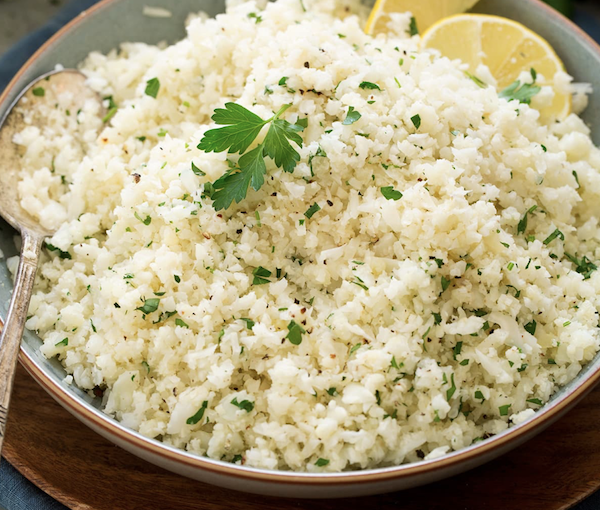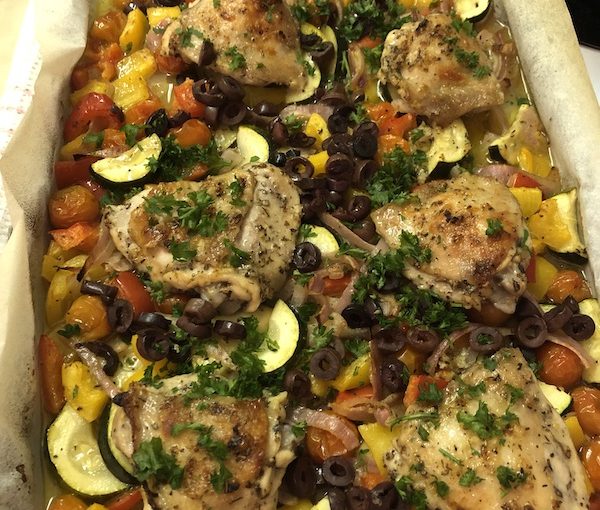Lamb Chops Sizzled with Garlic by Janet Mendel. Photo by Jennifer Causey, food styling by Emily Nabors Hall, prop styling by Claire Spollen.
When Hanukkah arrives, there will be more family and friends to feed. Or, maybe just the “excuse” (not that we need one) to make a special meal for ourselves! However you celebrate, here are a few main dishes – meatballs, lamb chops and a vegetarian gratin – and a couple of vegetarian side options.
TOMATO MEATBALLS
(makes 18)
1 lb ground beef
1/3 cup bread crumbs
1 egg
1 finely grated medium onion
salt and pepper to taste
2 tbsp olive oil
2 crushed garlic cloves
16-ounce can crushed tomatoes
6-ounce can tomato paste
1 cup water
1 1/2 tsp dry basil
- In a bowl, mix together ground beef, breadcrumbs, egg, onion, salt and pepper. Shape into 18 meatballs.
- Heat oil in a frying pan. Brown meatballs and remove.
- Add tomatoes, tomato paste, water and basil to pan. Bring to a boil, reduce heat and simmer, stirring when necessary.
- Add meatballs and continue simmering 10-15 minutes.
- Serve on their own, in a bun or on noodles, rice or any other base of your choice.
SWEET AND SOUR MEATBALLS
(This came from a Heinz ad, and I’ve made it kosher. It makes 40 balls.)
1 lb ground beef
1 cup breadcrumbs
1 egg
2 tbsp minced fresh onion
2 tbsp pareve non-dairy creamer
1 minced garlic clove
salt and pepper to taste
1 tbsp vegetable oil
2/3 cup chili sauce
2/3 cup currant jelly
- Combine beef, breadcrumbs, egg, onion, non-dairy creamer, garlic, salt and pepper. Form into 40 bite-size meatballs (about one teaspoon each).
- Heat oil in a frying pan. Place meatballs in pan, cover and brown lightly for 10 minutes.
- Combine chili sauce and jelly and pour over meatballs. Heat on low heat 10-12 minutes, until sauce has thickened, basting occasionally.
GRILLED HERBED LAMB CHOPS
(6 servings)
1/2 cup olive oil
1 cup white wine
1/2 cup minced fresh parsley
1/2 tsp marjoram
1/2 tsp oregano
1/2 tsp basil
1 tbsp minced shallots or white onion
1 minced garlic cloves
6 lamb chops
- In a bowl, combine olive oil, wine, parsley, marjoram, oregano, basil, shallots or white onion and garlic. Add chops and coat well. Marinate two to three hours, turning chops often.
- Grill chops five to six inches from heat, five minutes per side or until medium rare.
LAMB CHOPS SIZZLED WITH GARLIC
(Janet Mendel is an American-born journalist who has lived in Spain for many years. Las Pedroneras is considered the garlic capital of Spain and this recipe on Food & Wine’s website is Mendel’s “homage to the village.” It makes 4 servings.)
8 lamb chops
salt and pepper to taste
thyme
3 tbsp olive oil
10 halved garlic cloves
3 tbsp water
2 tbsp fresh lemon juice
2 tbsp fresh minced parsley
- Season lamb chops with salt, pepper and thyme. Heat olive oil in a large frying pan.
- Add lamb chops and garlic and cook over high heat for three minutes. Turn over chops and garlic and cook two minutes longer. Transfer to a plate.
- Add water, lemon juice and parsley, scrape bottom of pan and cook for one minute.
- Pour pan sauce over lamb chops and serve immediately.
OMBRÉ POTATO AND ROOT VEGETABLE GRATIN
(This is a recipe by TV personality and chef Carla Hall, with my changes to make it kosher. You can find the original on Food & Wine’s website. Both make 12 servings.)
unsalted pareve margarine
2 cups non-dairy creamer
3 minced garlic cloves
1 small minced shallot
1/2 tsp nutmeg
salt and pepper to taste
1 pound peeled beets, sliced 1/16-inch thick
1 pound peeled sweet potatoes, sliced 1/16-inch thick
1 pound peeled small white potatoes, sliced 1/16-inch thick
1 pound peeled turnips, sliced 1/16-inch thick
- Preheat oven to 375°F. Grease a rectangular baking dish.
- In a bowl, whisk non-dairy creamer with garlic, shallot, nutmeg, salt and pepper.
- In a large bowl, toss beets with a quarter of the cream mixture. Arrange beets in baking dish, overlapping them slightly. Scrape any remaining cream from the bowl over the beets.
- Repeat the process with the sweet potatoes, potatoes and turnips, using a quarter of the cream mixture for each vegetable. Then cover dish with foil.
- Bake for about one hour and 45 minutes. Let cool 15 minutes.
Note: If pareve grated cheese is available, measure one cup and stir it into the whisked cream mixture. After baking, add another 3/4 cup of the grated cheese to the top.
SPAGHETTI SQUASH WITH PEPPER SAUCE
(6 servings)
1 approx 3-pound spaghetti squash
1/4 cup olive oil
1 onion, slivered
2 red peppers, cut into 1/2-inch lengthwise strips
2 yellow peppers, cut into 1/2-inch lengthwise strips
2 chopped tomatoes
1/2 tsp sugar
1/4 cup fresh basil leaves, coarsely torn
salt and pepper to taste
- Preheat oven to 375°F. Place pierced squash in a baking pan. Bake for 40 minutes. Turn over and bake another 15-30 minutes, until tender. Turn off oven and let squash remain.
- Heat olive oil in a pot. Add onion and cook 10 minutes.
- Add peppers, season with salt and pepper. Cover and cook 20 minutes.
- Add tomatoes, sugar and basil. Cook uncovered 20 minutes.
- Cut the squash in half and discard seeds. Pull apart strands with a fork. Place in a bowl and add pepper sauce.
QUINOA SALAD WITH SWEET POTATOES AND APPLES
(This is a Food & Wine recipe by food stylist and author Grace Parisi. It makes 10-12 servings.)
8 tbsp olive oil
1 1/2 cups quinoa
salt and pepper to taste
1 1/2 pounds peeled sweet potatoes, cut into 3/4-inch cubes
1/4 cup apple cider vinegar
2 apples, cut into 1/2-inch cubes
1/2 cup chopped parsley
8 cups packed baby greens, such as arugula and kale
- Preheat oven to 400°F.
- Heat one tablespoon of oil in a saucepan. Add quinoa and cook two minutes. Add three cups water, season with salt and bring to a boil. Cover and simmer 16 minutes. Remove from heat and let stand 10 minutes. Fluff quinoa, spread on baking sheet and refrigerate 20 minutes.
- On another baking sheet, toss sweet potatoes with one tablespoon of oil, salt and pepper. Toast in oven 25 minutes, stirring once. Let cool.
- In a large salad bowl, whisk six tablespoons of oil with vinegar. Season with salt and pepper. Add quinoa, sweet potatoes, apples, parsley and greens and toss. Serve right away.
Sybil Kaplan is a journalist, lecturer, book reviewer and food writer in Jerusalem. She created and leads the weekly English-language Shuk Walks in Machane Yehuda, she has compiled and edited nine kosher cookbooks, and is the author of Witness to History: Ten Years as a Woman Journalist in Israel.

